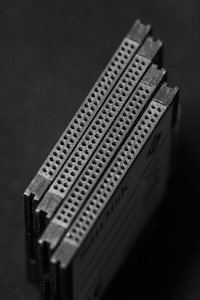When should you replace your media cards?
posted Monday, January 26, 2015 at 3:18 PM EDT

In my digital career, I’ve had three CompactFlash cards—that’s the media card containing my photographs—completely die on me. They became unreadable. In two of those cases, I could live without the lost photographs— I either didn’t need them or I could reshoot them.
In the other case, I paid close to $2000 for a high-end digital information retrieval company to re-scramble the card and find my photographs. (This company claimed they do a lot of work for the CIA.) It took them two weeks. Miraculously, they sent me a DVD with all of my photographs. (They sent the card back, too. I threw it away. I wanted it out of my life. I refused to touch it without wearing gloves.) I paid the $2000 so I wouldn’t have to call a valuable client and tell him the pictures “didn’t turn out”. In all three cases, however, I went through a period of tasting my own blood.
I’ve asked the experts why media cards go bad. There are so many reasons that all they can ever really do is guess. Common among them, I’ve been told, is taking the card out of your camera without turning the camera off first. That is universally considered a no-no. Also, as cards age— that is, after they’ve been filled and erased hundreds of times—they can become unreliable and behave erratically. New cards can be a little schizoid, too. Both scenarios are bad news. What to do, right? ( With my three bad cards, one was brand-new and two were years old.)
From what I’ve read, been told, and experienced, here is a basic approach to using your media cards that may save you from a disaster:
- Don’t photograph really important events with a brand-new media card.
- Don’t photograph really important events with media cards that have been grinding it out day after day for over two years.
- Write the date on the back of your media cards so you know how old they are.
- Photographs really important events with cards that have proven their reliability for at least a period of weeks.
- Keep your old media cards that haven’t gone bad around for events that aren’t all that important. It’s not going to be the end of the world if you lose those photographs you shot of those chairs to sell on eBay.
The manufacturers of these cards will tell you that if treated properly they will last a lifetime. There are a bunch of wedding photographers out there who will tell you that for the forty-five dollars to replace the card they are not going to take that chance. It’s your call, but it’s something to keep in mind.
As an afterthought, there have been several occasions when a card of mine would not read and I ran it through inexpensive retrieval software on my own computer and was able to recover the pictures. My point is this: if you have a card that is unrecognizable by your computer, don’t panic. In my experience, it’s highly likely you will eventually be able to get your pictures back.
(An exceptional educator and a world-class photographer, Nick Kelsh is the founder of How To Photograph Your Life, an excellent source of affordable photography training and tips. Nick’s courses can be conducted by yourself in your own time, or with feedback from Nick and your fellow students. If you appreciated this article and want to improve your photography, visit How to Photograph your Life and sign up for a course today!)